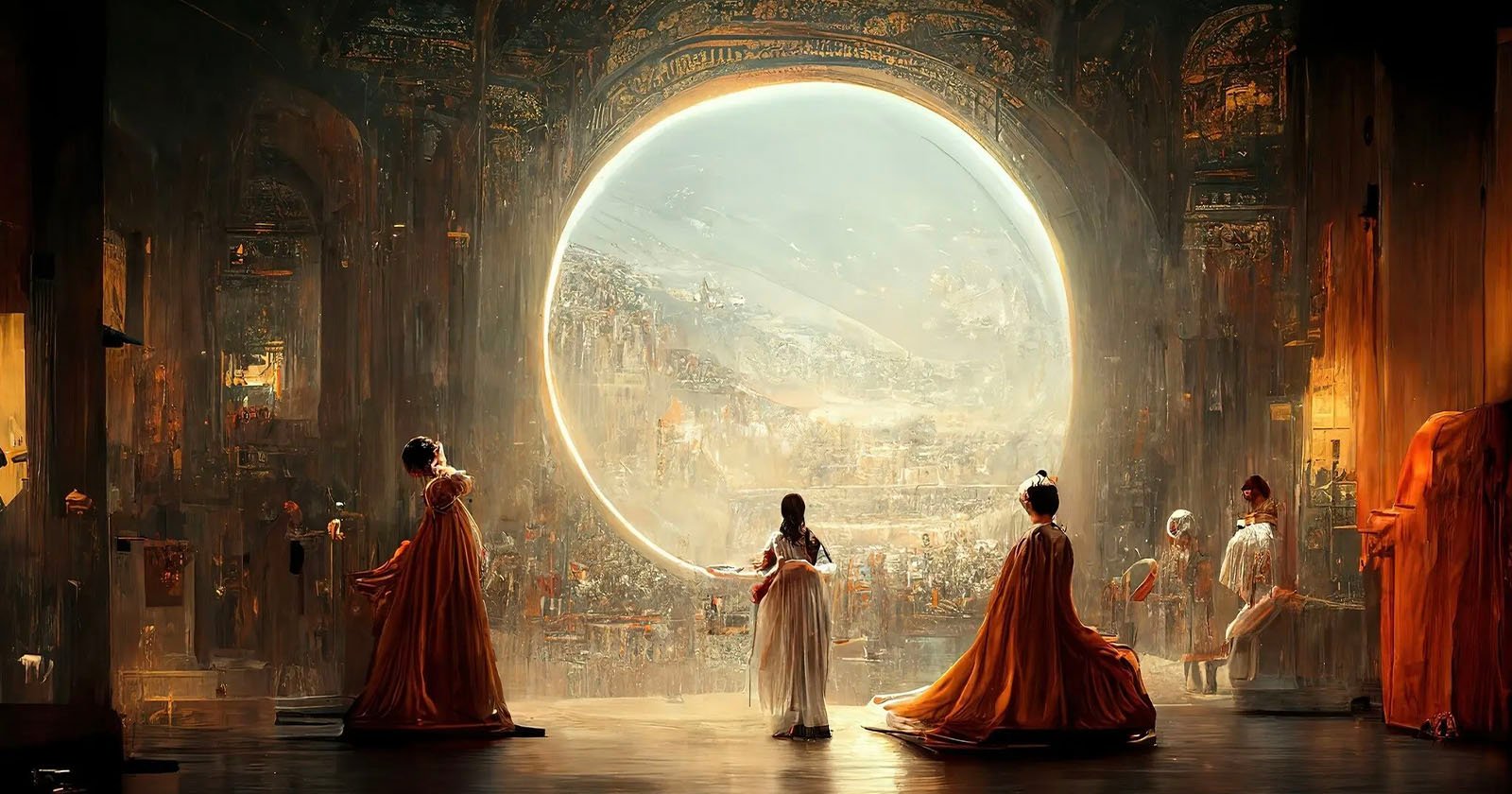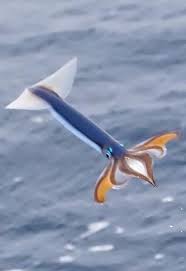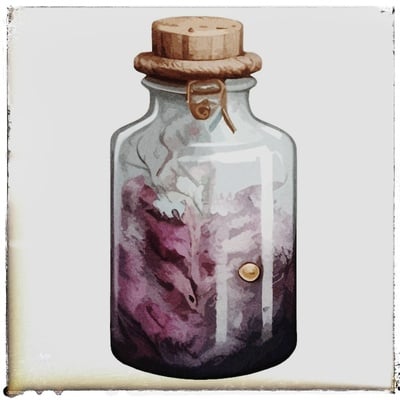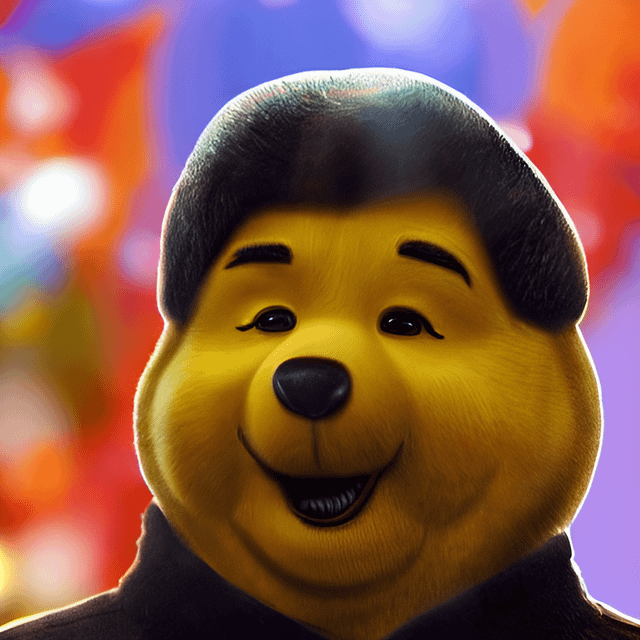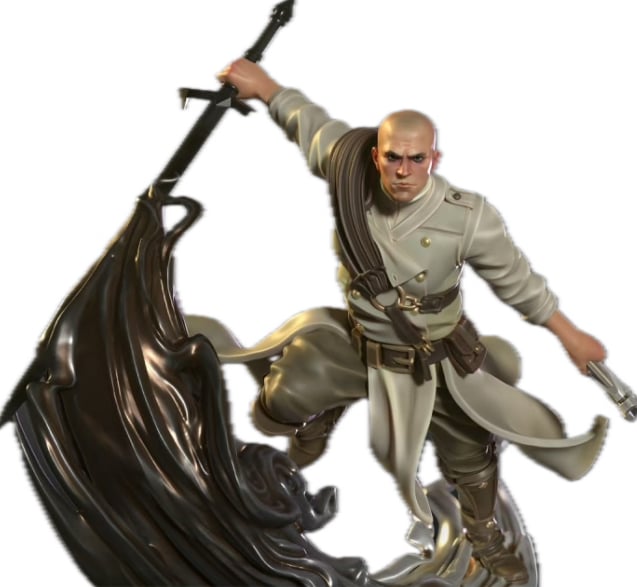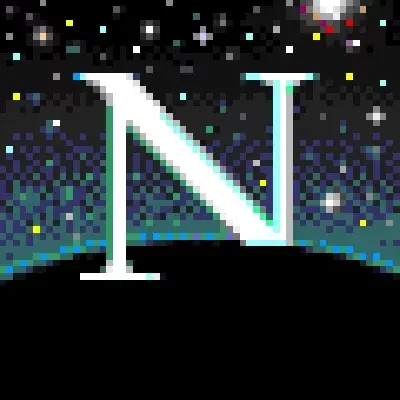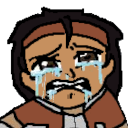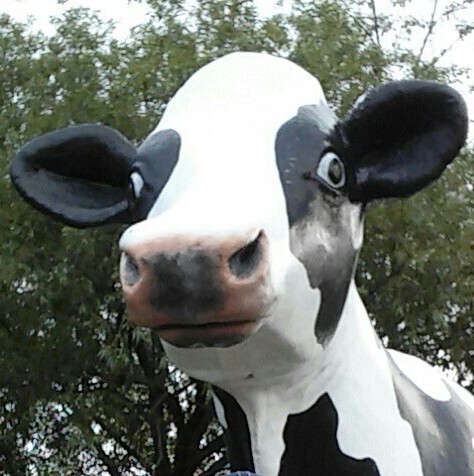An artist who infamously duped an art contest with an AI image is suing the U.S. Copyright Office over its refusal to register the image’s copyright.
In the lawsuit, Jason M. Allen asks a Colorado federal court to reverse the Copyright Office’s decision on his artwork Theatre D’opera Spatialbecause it was an expression of his creativity.
Reuters says the Copyright Office refused to comment on the case while Allen in a statement complains that the office’s decision “put me in a terrible position, with no recourse against others who are blatantly and repeatedly stealing my work.”
You have to be the creator of the work in order to copyright it. He didn’t create the work. If the wind organized the leaves into a beautiful pattern, he couldn’t copyright the leaves either.
Weirdly enough the monkey selfie probably establishes some precedence here, https://en.wikipedia.org/wiki/Monkey_selfie_copyright_dispute
Problem is the AI isn’t a monkey with a camera, it is an algorothm licensed from a company. The guy basically outsourced the work and tried to copyright the finished product which might be fine depending on the legal agreements and if the AI Company has the rights to it.
You could copyright a photograph of that leaf pattern though, couldn’t you?
You can copyright a combination of words, though, and it was his unique combination that created the art. The artist doesn’t copyright the palette, and the shop that sold the pigments holds no ownership over the painting. If the art is created with paint, pixels, or phrase, the final product belongs to the artist, and so should be protected by law for them.
If I use a combination of words to commission an artist to paint a picture, I don’t own the copyright on that picture.
It has to be fixed in a tangible medium.
In this case they’re not “fixing” their words and the final art is the created expression. Yet in this case their created expression wasn’t created by them but the program.
In this case their combination is the palette and paint but the program “interpreted” and so fixed it.
For example you can’t copyright a simple and common saying. Nor something factual like a phone book. Likewise you can’t copyright recipes. There has to be a “creative” component by a human. And courts have ruled that AI generated content doesn’t meet that threshold.
That’s not to say that creating the right prompt isn’t an “art” (as in skill and technique) and there is a lot of work in getting them to work right. Likewise there’s a lot of work in compiling recipes, organizing them, etc. but even then only the “design” part of the arrangement of the facts, and excluding the factual content, can be copyrighted.
In general these art pieces are not created simply with words. Users control the output using ControlNet which allows drawing on the image to force regeneration only to specific areas. It seems that if your only logic around it being non-copyrightable is due to them using words and that the program “does it all”, but that’s just not how it works.
I’m not in favor of copyrights for stuff like this, but you have a terrible misunderstanding of how these art pieces are created and it’s affecting your argument negatively.
You cannot copyright a recipe, but you can copyright the product it produces, as evidenced by the wealth of food and drinks that are protected by law from being copied.
Can a person who works with wood and creates something unique from the wood then copyright their design crafted from the wood? What makes it art and not just glue, iron nails, and dead trees? This is what needs to be defined with AI. Right now everyone is so happy to jump on the anti-AI bandwagon that they blind themselves to issues regarding the law by claiming the art is lawless at best and stolen at worst, when in fact it is simply a new tool and a new medium.
Did authors who used typewriters rail against the new word processor? What about the editor that checked for grammar and spelling? Did they try to burn down spell and grammar checks in microsoft word? Is the art any less art if it has been created with a tool that allows for more ease than has been available in the past? Should we boycott the bakers that do not mill their own wheat? Or does the sourdough bread belong to the wild yeast cultures, and so owed recompense for all we have taken from it?
The argument can be made until the universe burns out, or we can accept that art is made by sentient life, and any tool used in the production of it cannot be considered an owner of that art, and if the only sentient lifeform involved in the creation of that art wishes to claim it as their own, then they should have the right to protections for their work.
you can copyright the product it produces, as evidenced by the wealth of food and drinks that are protected by law from being copied.
No, you can neither copyright a recipe nor the food or drink it produces.
Food and drink is only protected by trademark law. You are free to make a burger that tastes exactly like a Big Mac, you simply can’t call it a Big Mac.
And you can take a photo of some natural rock formations on black and white film stock, but you can’t take Ansel Adam’s photo of natural rock formations on black and white film stock. This is what the artist is suing for. He wants to claim ownership of his work, which I believe falls under copyright law, just like Ansel Adam’s photos.
Ansel Adams has a copyright because of the creative control he had over his photos, such as in lighting, perspective and framing.
Artists generally cannot copyright AI output because they do not have a comparable degree of creative control. Giving prompts to an AI is not sufficient.


Ok, I controlled the lighting, perspective and framing. Can I copyright now?
I’m not Anti AI. I have fun making stuff with it.
But the copyright laws as they are don’t apply. And if they did it would open a can of worms legally.
The recipe can’t be copyrighted. The cake produced can’t be copyrighted. But the packaging or style of a cake with your brand could be trademarked which is a different legal ball of wax entirely
What is the limit to the number of words that can be copyrighted?
For sale,
baby shoes,
never worn.
Can I claim that as my own? Is six words the lowest? Four? Where is the line? What makes it art vs. instruction? If Hemmingway had said those words to his publicist and asked that they be published instead of writing them himself, would he still own them?
And therein lies the rub. When it comes to copyright every infringement case has to be adjudicated by a judge (assuming they have filed a copyright)
I can definitely recommend Leonard French’s (a copyright lawyer) channel Lawful Masses on YouTube and Twitch for a more in-depth breakdown of copyright cases. How it works, the rights that copyright holders have, etc.
the final product belongs to the artist, and so should be protected by law for them.
Then the real artist, the AI, should request the copyright. And sue the charlatan that tried to take its work and claim all credit.
And the camera owns the photograph, and Photoshop owns the digital image, and Final Cut Pro owns the film? The tool owns nothing. The tool is incapable of ownership
Thus the value of the art is reduced to an idea and the human labor invested. The labor is practically zero and an idea is worth nothing. That means there is nothing worthwhile to copyright
Wow.
And how do you define a tool?
Couldn’t you take a picture of the leaves and copyright that?
If I made an image in photoshop, the computer made it, I just directed it.
How is AI different?
And that’s why I make art completely without instruction or man made tools. I actually independently developed cellphones and English purely to dunk on people on the internet.
Funny but that is kind of my point, where is the line and why?
What are you talking about? The computer didn’t make it. That’s like saying a paintbrush made a painting.
That is not even close to AI image generation.
If you didn’t make it, how the fuck can it be stolen from you?
Machine output cannot be copyrighted. Whether prompt tweaking and the other stuff involved in making AI art is enough for something to not be considered machine output is still to be decided by the courts.
He spent weeks on fine tuning tbf
It’s like photography: Photographers often spend weeks trying to get the perfect shot, should they be allowed to copyright it?
Another thought experiment: If I hire an artist and tell them exactly what they should draw, which style they should use, which colours they should use etc does 100% of the credit go to the artist or am I also partly responsible?
According to these people, YOU become the artist, AND the AI is the artist.
If I order an art piece by someone, and reject thousands of finished pieces for it to not meet my standards, will i become an artist?
If I take lots of photos, print out and frame one of them but delete the others, will I become an artist?
If I order an photograph by someone, and reject thousands of finished pieces for it to not meet my standards, will i become a cameraman?
Weeks? That shit can be done in mere minutes.
“I have been exploring a special prompt that I will be publishing at a later date, I have created hundreds of images using it, and after many weeks of fine-tuning and curating my generations, I chose my top three and had them printed on canvas,” he writes.
He’s still not an artist.
deleted by creator
its debatable who the artist is, however, because if you remove the ai from the picture he could never have made this, and if you remove the training data the results would also be different.
Realistically: everyone whose data this was trained on should be included as authors if its not just public domain
There were similar debates about photographs and copyright. It was decided photographs can be copyrighted even though the camera does most of the work.
Even when you have copyright on something you don’t have protection from fair use. Creativity and being transformative are the two biggest things that give a work greater copyright protection from fair use. They at are also what can give you the greatest protection when claiming fair use.
See the Obama hope poster vs the photograph it was based on. It’s to bad they came to an settlement on that one. I’d have loved to see the courts decision.
As far as training data that is clearly a question of fair use. There are a ton of lawsuits about this right now so we will start to see how the courts decide things in the coming years.
I think what is clear is some amount of training and the resulting models fall under fair use. There is also some level of training that probably exceeds fair use.
To determine fair use 4 things are considered. https://www.copyright.gov/fair-use/
1 Purpose and character of the use, including whether the use is of a commercial nature or is for nonprofit educational purposes.
This is going to vary a lot from training model to training model.
Nature of the copyrighted work.
Creative works have more protection. So training on a data set of a broad set of photographs is more likely to be fair use than training on a collection of paintings. Factual information is completly protected.
-> Amount and substantiality of the portion used in relation to the copyrighted work as a whole.
I think ai training is safe here. Once trained the ai data set usually doesn’t contain the copyrighted works or reproduce them.
Effect of the use upon the potential market for or value of the copyrighted work.
Here is where ai training presumably has the weakest fair use argument.
Courts have to look at all 4 factors and decide on the balance between them. It’s going to take years for this to be decided.
Even without ai there are still lots of questions about what is and isn’t fair use.
No but you don’t get it, they wrote a couple words and also they know how to use the spot healing brush in photoshop, they’re a REAL artist!
To be somewhat fair this prompt probably took quite a bit of work. Still way less than even producing it digitally but not a couple words.
Super interesting. The guy claims is wasn’t just ai, that he performed alterations as well. If that’s true but he still gets shot down it might pave the way for AI being much more shunned in the world out of IP concerns on the output side rather than the training data.
You can’t copyright that music, game, book, screenplay or video because AI made some contribution.
“”“Artist”“”
That douche punched a sentence into a computer and thinks he’s an artist? My god what have we become.
That douche punched a sentence into a computer
The jokes write themselves, folks.
Yeah, the joke is that someone thinks they can call themselves an artist by typing a sentence into a prompt on a computer. I get that you’re trying to call me out, but the failure in your joke is that I’m not claiming to be an artist. That douche is.
You’ve got nothing.
I mean, everyone knows writing isn’t art. It takes no skill to make something meaningful out of words.
Keep trying, you’ll get there one day.
You’ve got nothing.
That’s a matter of perspective.
deleted by creator
Oh gee so scammers aren’t getting protection for lying? Dang what a cruel world poor him…
/s
This is stupid and I hope he gets his butt handed to him, but:
A federal judge agreed with the Office and contrasted AI images to photography, which also uses a processor to capture images, but it is the human that decides on the elements of the picture, unlike AI imagery where the computer decides on the picture elements.
Journey outside the world of API models (like Midjourney) and you can use imagegen tools where " the human that decides on the elements of the picture"
It can be anything from area prompting (kinda drawing bounding boxes where you want things to go) to controlnet/ipadapter models using some other image as reference, to the “creator” making a sketch and the AI “coloring it in” or fleshing it out, to an artist making a worthy standalone painting and letting the AI “touch it up” or change the style (for instance, to turn a digital painting or a pencil sketch to something resembling a physical painting, watercolor, whatever).
The later is already done in photoshop (just not as well) and is generally not placed into the AI bin.
In other words, this argument isn’t going to hold up, as the line is very blurry. Legislators and courts are going to have to come up with something more solid.
Womp womp
Ah, I remember this image. It received some kind of award or something and created a stir when it was revealed to be AI gen. I can see why that would be incentive to want copyright.
I play with AI image generation all the time. No way do I see that as my work, there’s no skill other than positive and negative prompts, maybe feeding it a a starter image set or something.
Where it might be more concerning is if you use AI gen to create an 2D example of something, then an artist creates a 3D physical representation of the thing. Who owns it? AI famously is not good at creating “whole” things, but one can certainly interpret that image to make a whole of it.
I guess no one owns it, it’s like in the common societies mind or something, especially if it’s an ai model trained on free stuff found in said society.
Like a chair; paint it, draw it, build it, cannot copyright it but you can’t make an exact copy of someones fresh creation either.
I play with AI image generation all the time. No way do I see that as my work, there’s no skill other than positive and negative prompts, maybe feeding it a a starter image set or something.
I play with image editing software all the time. There’s no skill other than adding or changing marks, maybe using a reference or something.
Fun idea: let him copyright his prompt, if he’s so particular about his “creativity.”
“artist”
““my work””
no artist to begin with
I’m glad you posted this here, because there’s obviously a lot of controversy about this.


